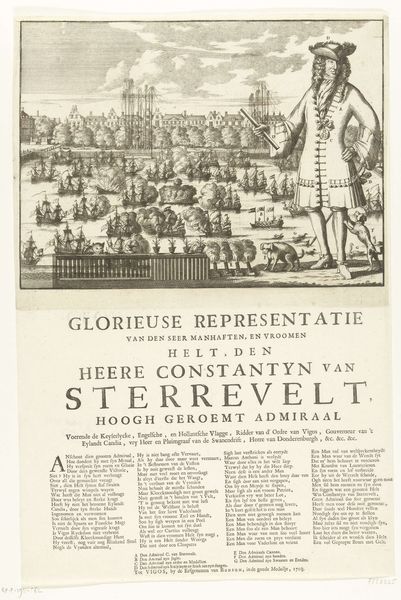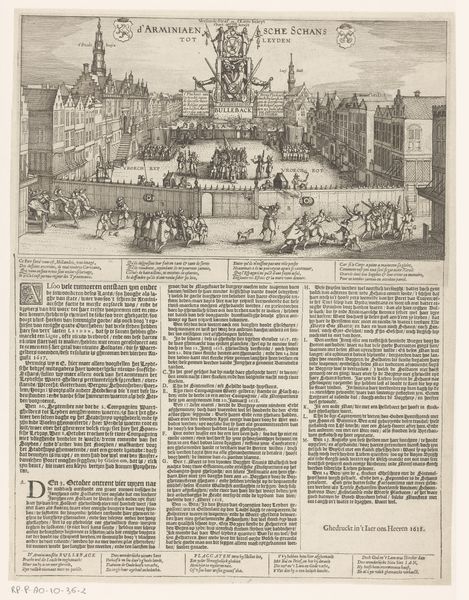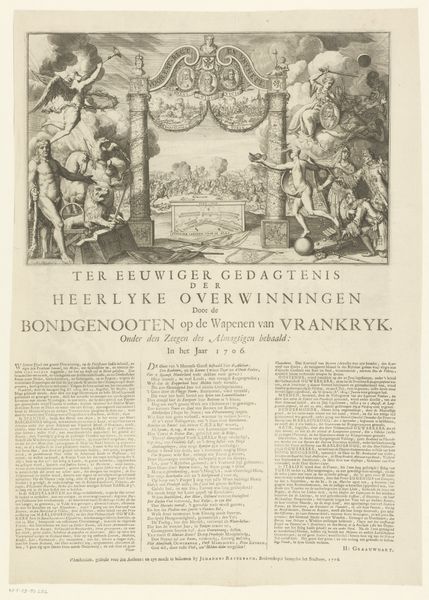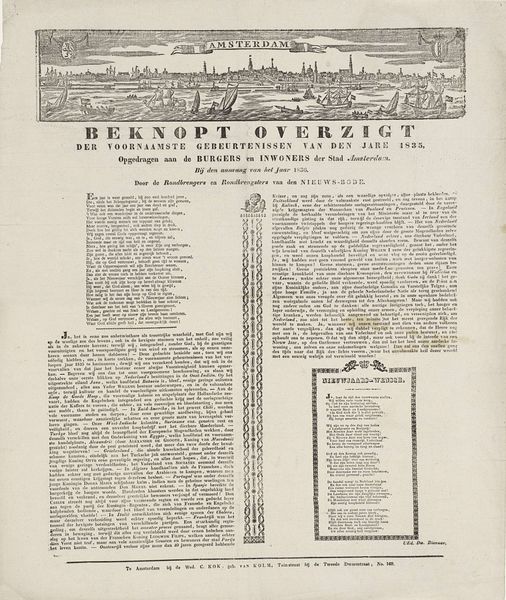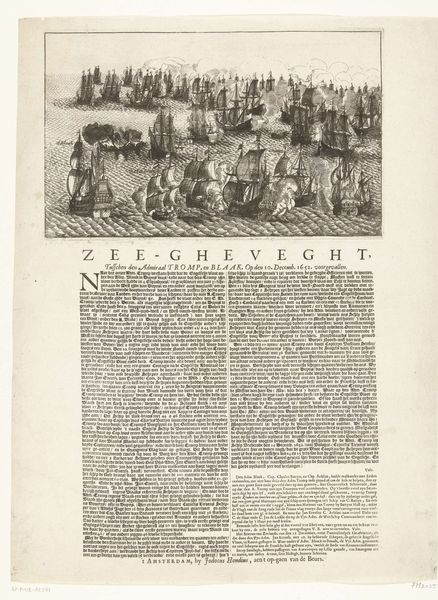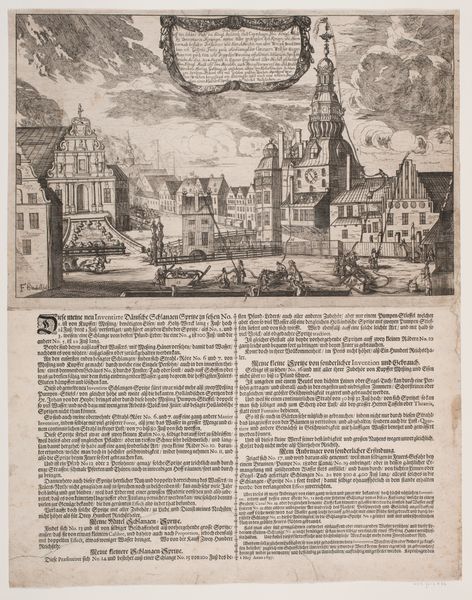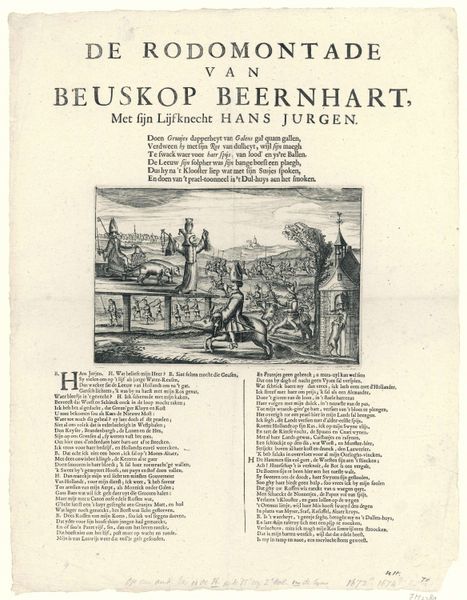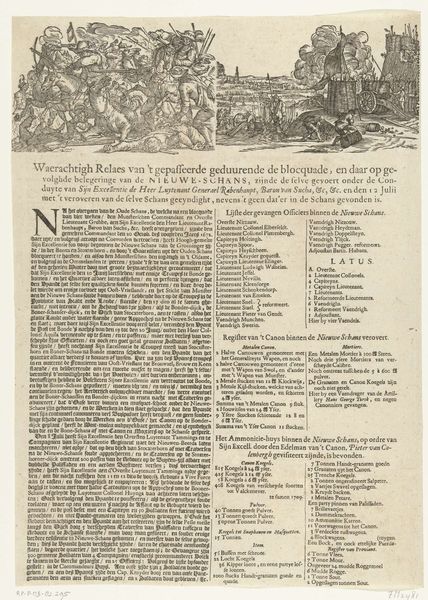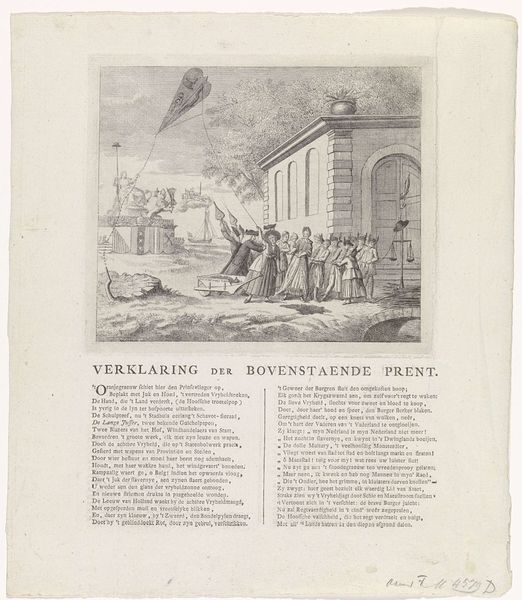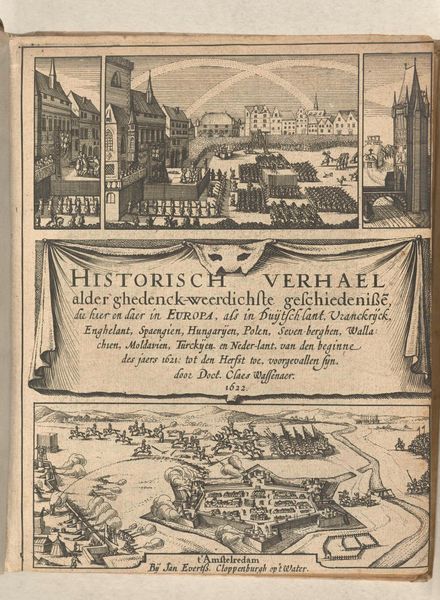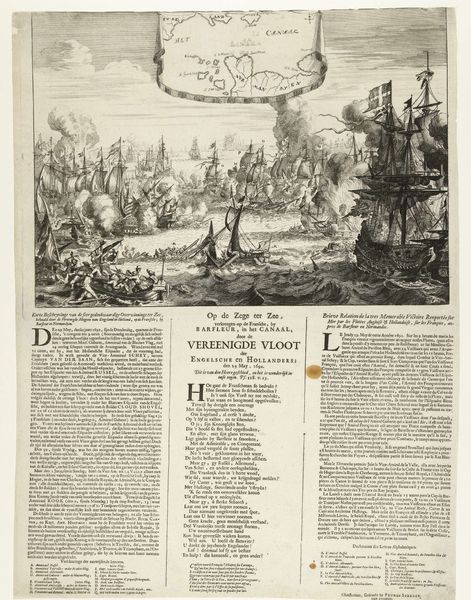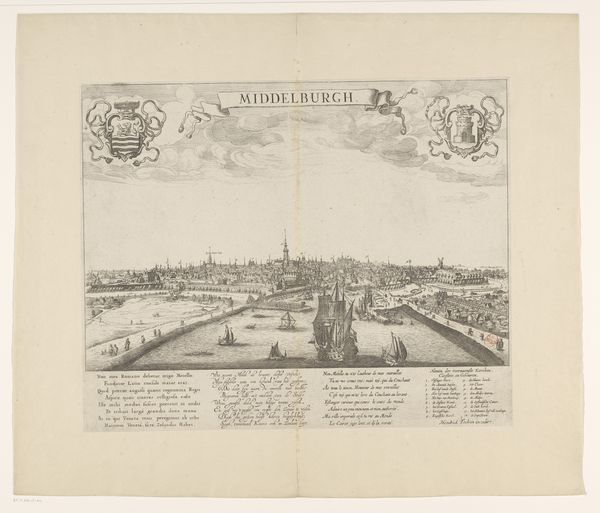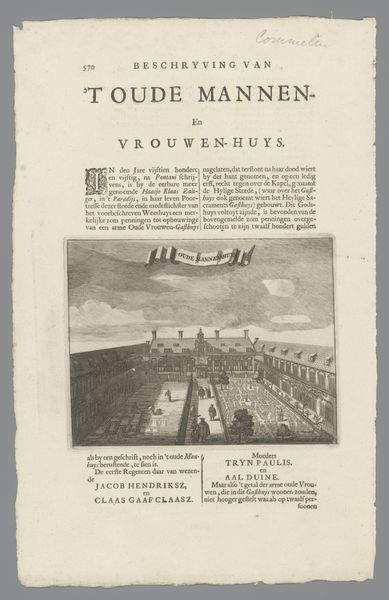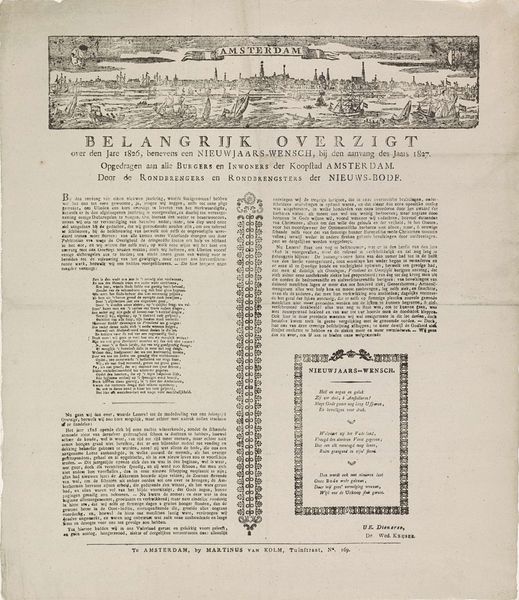
De bevrijding van de gegijzelde Scheveningse vissers en de dwaasheid van admiraaal Sterrevelt, 1704 1704
print, engraving
dutch-golden-age
old engraving style
landscape
pen work
cityscape
engraving
historical font
columned text
Dimensions: height 508 mm, width 356 mm
Copyright: Rijks Museum: Open Domain
This print, made in 1704 by an anonymous artist, commemorates the liberation of fishermen from Scheveningen, Netherlands. Its form speaks volumes about the society in which it was made. As an engraving, the image relies on the basic techniques of incising lines into a metal plate, inking the surface, and then pressing it onto paper. The result is a relatively inexpensive, easily reproduced image that can circulate widely. This was a potent method for disseminating information and shaping public opinion. Consider the labor involved: from the engraver meticulously carving the scene to the printing process itself, and the distribution of the final product. Each stage reflects the social and economic structures of the time. The choice of printmaking, rather than painting, makes this historical moment accessible to a broader public, imbuing it with a democratic spirit, at least in representational terms. In understanding the image, we need to consider not just its aesthetic qualities but also the materiality and making of the print itself, placing it within the broader context of labor, politics, and consumption in the 18th-century Netherlands.
Comments
No comments
Be the first to comment and join the conversation on the ultimate creative platform.
